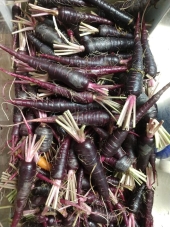Someone recently asked how we decide what to grow in our gardens. I thought this was a great question!
Here's how I "reverse engineered" what we'll try to grow:
1. I visited
http://orthomolecular.org/nutrients/index.shtml and looked up which foods contain high amounts of their listed vitamins, minerals, and fats/oils.
2. From that list, I noted which foods in each category my family likes to eat. (No one here particularly cares for radishes or eggplants, so I'm not planning to add those. Radishes are on my list as "fillers" for spaces and quick harvesting.)
3. I narrowed down that list even further to which of those foods will grow well in my zone.
For instance, I know that alliums are high in phosphorous, selenium, sulfur, and bioflavonoids. Peanuts are good sources of copper, magnesium, phosphorous, potassium, zinc, and several of the B complex. Both of those foods grow well here in my climate. I will definitely grow those. We LOVE Brussels sprouts, although they are hard to grow here. I keep them on my "wish" list. Sunflower seeds are a good source of essential fatty acids, so those are on our "definitely to grow" list.
Celery struggles in the summer heat. So though it's a good source of selenium, I won't rely on its harvest. However, I can buy a head of celery and regrow it for smaller leaves to add to soups, etc. It's just not something I am relying on for our selenium.
I'm also adding to my perennials like fruit trees/vines, brambles, "weeds", etc. I have some sunchokes. I'm hoping to add a good rose for rosehips and a green tea camellia. I have potted purslane and an aloe vera I move indoors during winter months.
I've attached a PDF file that I made which shows all the plants I am able to grow, along with which nutrients they contain. Your soil/climate/etc might be different, but hopefully you can follow my thought process.









